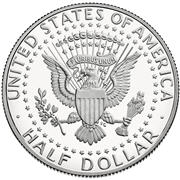
How American Coinage Started
Rare American Coins and Their Beginnings in the US
After the US became an independent nation, we were still using coinage from European countries as our medium of exchange. Primarily, we used coins from Britain, Spain, France, Portugal and especially Mexico.
Before the establishment of a US Mint, the one ounce silver coin was the standard for the dollar of value
Thomas Jefferson proposed a coinage system based on the dollar, which was derived from the German/Austrian thaler. Similar sized silver crown coins were also commonly circulated in Europe during this time.
The name dollar was chosen specifically so it wouldn’t be confused with the British crown. After the revolutionary war, the United States wanted nothing to do with British influence, monetary or otherwise.
In 1785, Congress approved a coinage plan, but didn’t establish a standard weight for gold and silver coins, nor did it establish a mint.

In 1789, Alexander Hamilton was named head of the Treasury. The new proposal was for a gold $10, and $1 coin. The proposal also included a $1 silver coin, and a silver dime. The cent and half cent would be copper. Hamilton suggested naming the $10 gold coin an “eagle” and the name stuck.
Finally in 1792, Congress established a new mint in Philadelphia and the following denominations for coins: gold $10, $5, $2.5, silver $1, $.50, $.25, $.10, $.05, copper cent and ½ cent. Minting began in 1793 with the striking of the lower denominational coins.
Silver coinage was struck the next year and gold coinage the following year. None of these issues exceeded 9,000 coins. By today’s standards, they are truly rare American coins.
These new coins, particularly the gold and silver ones were close to the weight and proportions of the foreign coins already circulating in this country at the time. Until 1857, both foreign and domestic coins circulated equally as legal tender.
These coins were based on a bimetallic system. That is, the US had both a gold and silver standard. 5 silver dollars equaled 5 gold dollars.
Since the gold to silver ratio varied slightly as more gold or silver was discovered, it was difficult to keep perfect parity between the two precious metals. The more valuable metal quickly left circulation and was hoarded.
This situation happened for the next hundred years as new deposits of gold or silver were discovered. Finally, the Coinage Act of 1873 ended the dispute by putting the nation on a gold-only standard, demonetizing silver in theory. This gold standard wasn’t completely adopted until 1900, however.

That didn’t favor the silver interests of the day and they fought it. Silver dollars continued to be produced for circulation as the cheaper, more plentiful form of money.
The Bland-Allison Act of 1878 required the US government to purchase silver and produce silver dollars for circulation. By then, the intrinsic value of the silver dollar dropped to 52 cents.
Gold was once again the higher valued form of money. Treasury notes were redeemed for gold rather than silver, and drained the Treasury reserves of significantly more gold than silver.
Finally, in 1900 after lengthy debates, Congress resolved the gold/silver value dispute by legislating the gold-only standard. The US would then maintain all forms of money in parity with that standard.
During the early 1930’s all circulating gold coins were discontinued. By the mid 1930’s, silver dollar coins also stopped being minted. The US then discontinued production of all 90% silver coins in 1964.

In 1971, President Nixon announced the US would no longer exchange paper currency for gold, and removed this country from the gold standard. The US was the last major country to go off the gold standard and become a fiat currency.
At that time, we as a nation had the concern about depleting our gold reserve while on the gold standard, but inflation was fairly low in the early 1970’s. Now, we aren’t at all concerned about depleting gold reserves, and inflation is skyrocketing.
To discover more about coins: collecting issues, money management, investing in the rare and bullion coin market, and much more, I invite you to visit for videos and free tips on buying coins at the best prices.
Article Source: Rare American Coins and Their Beginnings in the US








